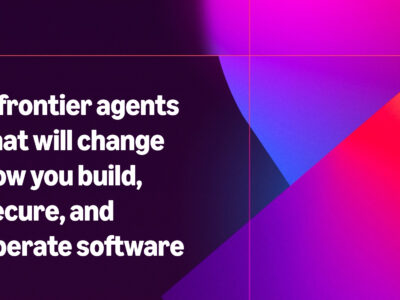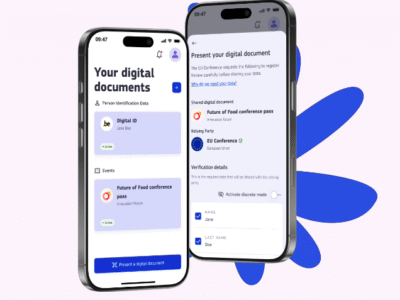In the field of Cybersecurity, Incident Response (IR) teams leverage a variety of technologies to detect, analyze, mitigate, and recover from security incidents. Furthermore, IR is a structured approach to addressing and managing the aftermath of a security breach or cyberattack. It is an approach that helps limit damage, reduce recovery time and cost, and mitigate the impact on business operations.
IR technologies are used for different aspect of incident response such as preparation, identification, containment, eradication, recovery, documentation, communication, compliance, analysis, and continuous improvement. In addition, one of the most popular Incident Response technologies is Security Information and Event Management (SIEM). You can read more about the tools.
Before we see the general IR technologies, I’d like to specifically mention the some common incident response tools by Amazon Web Services (AWS). They are as follows;
- Amazon GuardDuty: Threat detection and continuous monitoring.
- AWS CloudTrail: Logging and monitoring API activity.
- AWS Config: Configuration monitoring and compliance tracking.
- Amazon Detective: Incident investigation and root cause analysis.
- Amazon Inspector: Purpose: Vulnerability assessment for EC2 instances and container images.
- AWS Lambda: Serverless automation for incident response.
- AWS IAM (Identity and Access Management): Managing access and permissions.
- AWS Macie: Data protection and sensitive data discovery.
- AWS Step Functions: Orchestrating incident response workflows.
Here are the other IR technologies.
Incident Response Technologies
Endpoint Detection and Response (EDR)
EDR solutions are used to monitor and respond to threats on endpoints such as laptops, desktops, and servers. EDR tools provide detailed visibility into endpoint activities and can automatically respond to detected threats. Examples of these tools are CrowdStrike Falcon, Microsoft Defender for Endpoint, Carbon Black, and SentinelOne.
Network Traffic Analysis (NTA)
NTA tools monitor network traffic for unusual patterns that may indicate a security incident. NTA tools help in detecting anomalies, such as data exfiltration or lateral movement within the network. Examples are Darktrace, Cisco Stealthwatch, and ExtraHop.
Threat Intelligence Platforms
Threat intelligence platforms aggregate and analyze threat data from various sources to provide actionable intelligence. They help IR teams understand the tactics, techniques, and procedures (TTPs) used by cyber attackers. Examples of these platforms are Recorded Future, ThreatConnect, and Anomali.
Digital Forensic Tools
Forensic tools are used to investigate and analyze digital evidence after a security incident. They help in understanding the scope of the incident and identifying the root cause. Examples are EnCase, FTK (Forensic Toolkit), and Autopsy.
Incident Response Platforms
IR platforms provide a centralized environment for managing and automating incident response processes. They help in orchestrating response activities, tracking incidents, and ensuring compliance with response protocols. Common examples are Palo Alto Networks Cortex XSOAR, IBM Resilient, and Swimlane.
Vulnerability Management Tools
Vulnerability tools identify, classify, and prioritize vulnerabilities in an organization’s systems. They help in proactively addressing weaknesses that could be exploited by attackers. Examples are Tenable.io, Qualys, and Rapid7 InsightVM.
Deception Technology
Deception technology involves setting up decoys and traps within the network to detect and mislead attackers. It helps in identifying attackers who have breached the perimeter. Computer systems designed for this purpose are referred to as HoneyPots. Examples of deception technologies are TrapX, Attivo Networks, and Illusive Networks.
Cloud Security Posture Management (CSPM)
CSPM tools monitor and manage the security posture of cloud environments. They help in detecting misconfigurations and ensuring compliance with security policies. The common examples are Prisma Cloud by Palo Alto Networks, McAfee MVISION Cloud, and Aqua Security.
Automation and Orchestration Tools (AOT)
AOT Tools automate repetitive tasks and orchestrate complex workflows in incident response. They help in speeding up response times and reducing the workload on IR teams. Examples are Splunk, Palo Alto Networks Cortex XSOAR, and Siemplify.
Malware Analysis Tools
Malware Analysis tools analyze malicious software to understand its behavior, origin, and impact. They help in developing effective countermeasures and mitigating the threat. Examples of these tools are Cuckoo Sandbox, Joe Sandbox, and VirusTotal.
Data Loss Prevention (DLP)
DLP tools monitor and control the movement of sensitive data within and outside the organization. They help in preventing data breaches and ensuring compliance with data protection regulations. Examples are Symantec DLP, McAfee DLP, and Digital Guardian.
Identity and Access Management (IAM)
IAM solutions manage user identities and control access to resources. They help in detecting and responding to unauthorized access attempts. Examples are Okta, Microsoft Azure AD, and Ping Identity.
Zero Trust Network Access (ZTNA)
ZTNA solutions enforce strict access controls based on the principle of least privilege. They help in minimizing the attack surface and preventing lateral movement within the network. Examples are Zscaler Private Access, Cloudflare Access, and Netskope.
User and Entity Behavior Analytics (UEBA)
UEBA tools analyze user and entity behavior to detect anomalies that may indicate insider threats or compromised accounts. They help in identifying suspicious activities that traditional security tools might miss. Examples are Exabeam, Gurucul, and Securonix.
In conclusion, these technologies, when used in combination, provide a comprehensive approach to incident response, enabling organizations to detect, respond to, and recover from security incidents more effectively. Furthermore, the use of any of these technologies should be determined based on the organization’s goals, risk appetite, cost-benefit analysis etc. It is also important to know that the technologies found here subject to change based on the owners choice. I may not be able to update the list to incorporate the changes. Also, your use of any of the above mentioned tools is based on your discretion.






